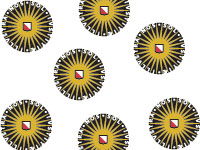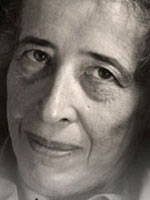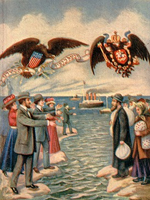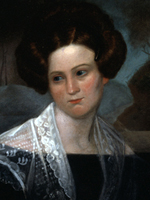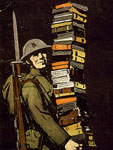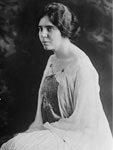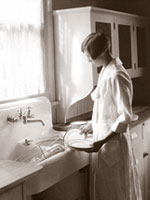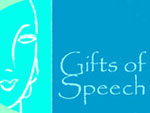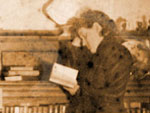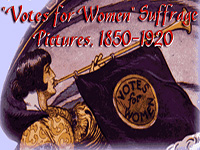Historical literature can really grab your students' interest. Consider the following excerpt:
They had come for him just after midnight. Three men in suits and ties and black fedoras with FBI badges under their coats. 'Grab your toothbrush,' they’d said. This was back in December, right after Pearl Harbor, when they were still living in the white house on the wide street in Berkeley not far from the sea. The Christmas tree was up and the whole house smelled of pine, and from his window the boy had watched as they led his father out across the lawn in his bathrobe and slippers to the black car that was parked at the curb.
He had never seen his father leave the house without his hat on before. That was what had troubled him most. No hat. And those slippers: battered and faded, with the rubber soles curling up at the edges. If only they had let him put on his shoes then it all might have turned out differently. But there had been no time for shoes.
Grab your toothbrush.
Come on. Come on. You’re coming with us.
We just need to ask your husband a few questions.
Into the car, Papa-san
Later, the boy remembered seeing lights on in the house next door, and faces pressed to the window. One of them was Elizabeth's, he was sure of it. Elizabeth Morgana Roosevelt had seen his father taken away in his slippers.
The next morning his sister had wandered around the house looking for the last place their father had sat. Was it the red chair? Or the sofa? The edge of his bed? She had pressed her face to the bedspread and sniffed.
"The edge of my bed," their mother had said.
That evening she had lit a bonfire in the yard and burned all of the letters from Kagoshima. She burned the family photographs and the three silk kimonos she had brought over with her nineteen years ago from Japan. She burned the records of Japanese opera. She ripped up the flag of the red rising sun. She smashed the tea set and the Imari dishes and the framed portrait of the boy's uncle, who had once been a general in the Emperor's army. She smashed the abacus and tossed it into the flames. "From now on," she said, "we are counting on our fingers."
The next day, for the first time ever, she sent the boy and his sister to school with peanut butter and jelly sandwiches in their lunch pails. "No more rice balls," she said. "And if anyone asks, you're Chinese."
The boy had nodded. "Chinese," he whispered. "I'm Chinese."
"And I," said the girl, "am the Queen of Spain."
"In your dreams," said the boy.
"In my dreams," said the girl, "I'm the King."
—When the Emperor Was Divine, a novel by Julie Otsuka, p. 7375
Recommendations
This list includes books considered to be for adult readers as well as books considered to be for young adult readers. These labels are only somewhat useful. Occasionally the young adult books are less challenging, though perhaps equally rewarding, for the reader.
A Very Long Engagement by Sebastien Japrisot won the Prix Interallie in 1991. This nonlinear mystery is a moving and incisive portrait of life in France during and after the First World War.
An ambitious, meticulously researched, novel, The Green Glass Sea by Ellen Klages is set in New Mexico in 1943 and told from the viewpoint of two disenfranchised children at Los Alamos where scientists and mathematicians converge (along with their families) to construct and test the first nuclear bomb. Grades 5up.
No Pretty Pictures, Caldecott illustrator Anita Lobel's haunting memoir of her traumatic years in Nazi-occupied Poland, is told from the perspective of a child—she is just five when the war begins—who does not fully comprehend what she is witnessing. Grade 6up.
Private Peaceful by Michael Morpurgo is a slim, stunning, and easily accessible novel written by the author of War Horse. "Exquisitely written vignettes explore bonds of brotherhood that cannot be broken by the physical and psychological wars of the First World War," said Horn Book Magazine. Grade 7up. Match with the superb photo-essay The War to End All Wars: World War I by Russell Freedman.
Bird in a Box by Andrea Davis Pinkney is a graceful, restrained, and detailed portrait of America's Great Depression, a time when the radio delivered the sound of Ella Fitzgerald and Duke Ellington into living rooms across the country and boxing champion, Joe Lewis, the "Brown Bomber," came to represent so much more than the zenith of a sport. Grade 4up.
Set on the Laguna Pueblo Reservation in the years immediately following World War II, Ceremony by Leslie Marmon Silko, focuses on Tayo, a young vet of mixed Indian ancestry. The book is Tayo's story of return and redemption. "The novel is very deliberately a ceremony in itself—demanding but confident and beautifully written," said the Boston Globe.
The Book Thief by Markus Zusak is an unsettling, unsentimental, poetic novel, set in World War II and narrated by Death. This is not an easy read, but it is a book that can change a life. Grade 9up.
We Are the Ship by Kadir Nelson is a sumptuous history of Negro League Baseball from its beginning in the 1920s to 1947 when Jackie Robinson broke the major leagues’ color barrier. Dazzling, almost iconic paintings illustrate the easygoing, conversational, historically detailed text, and all in all the book illuminates more than baseball in the '20s and '30s—it is a history of all of us. Grade 4up.
The narrator of Ruta Sepetys's Between Shades of Gray, 15-year-old Lina, begins "They took me in my nightgown." In 1941, Stalin is deporting families from Lithuania and imprisoning them in Siberia where daily life is brutal. It is the slim possibility of survival that provides hope. This book is similar to Esther Hautzig's earlier autobiographical novel, Endless Steppe in that it is similarly themed and equally searing. In Endless Steppe, 10-year-old Esther Rudmin is arrested with her family in Poland as "enemies of the people" and exiled to Siberia. Grade 6up.
Homestead, by Rosina Lippi, is a series of interconnected vignettes beginning in 1909, about life in Rosenau, a small isolated village in the Austrian Alps. The villagers harvest, tend animals, and make cheese. Against this pastoral backdrop are all of life's vicissitudes. The prose is clean and clear, each chapter is seemingly autonomous but as we see an event (over generations) from different characters' points of view, the life of Rosenau becomes increasingly rich and complex. This novel won the 1998 Hemingway Foundation/PEN Award for best first fiction and was short-listed for the 2001 Orange Prize.
Complete List of Titles
- When the Emperor Was Divine by Julie Otsuka
- A Very Long Engagement by Sebastien Japrisot
- The Green Glass Sea by Ellen Klages
- No Pretty Pictures: A Child of War by Anita Lobel
- Private Peaceful by Michael Morpurgo
- The War to End All Wars: World War I by Russell Freedman
- Bird in a Box by Andrea Davis Pinkney
- Ceremony by Leslie Marmon Silko
- The Book Thief by Markus Zusak
- We Are the Ship: The Story of Negro League Baseball by Kadir Nelson
- Between Shades of Gray by Ruta Sepetys
- The Endless Steppe: Growing Up in Siberia by Esther Hautzig
- Homestead by Rosina Lippi
